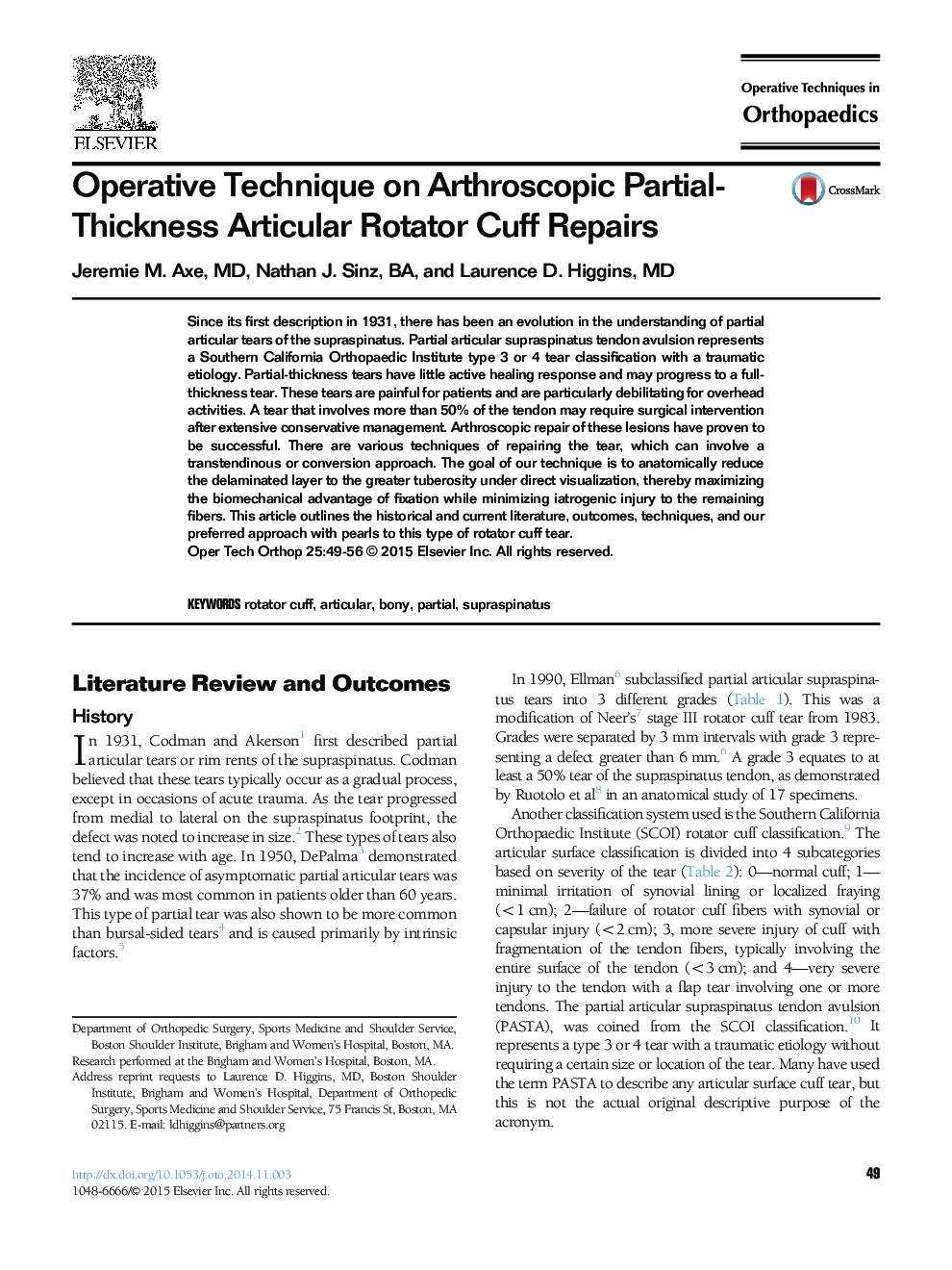| Article ID | Journal | Published Year | Pages | File Type |
|---|---|---|---|---|
| 4078821 | Operative Techniques in Orthopaedics | 2015 | 8 Pages |
Since its first description in 1931, there has been an evolution in the understanding of partial articular tears of the supraspinatus. Partial articular supraspinatus tendon avulsion represents a Southern California Orthopaedic Institute type 3 or 4 tear classification with a traumatic etiology. Partial-thickness tears have little active healing response and may progress to a full-thickness tear. These tears are painful for patients and are particularly debilitating for overhead activities. A tear that involves more than 50% of the tendon may require surgical intervention after extensive conservative management. Arthroscopic repair of these lesions have proven to be successful. There are various techniques of repairing the tear, which can involve a transtendinous or conversion approach. The goal of our technique is to anatomically reduce the delaminated layer to the greater tuberosity under direct visualization, thereby maximizing the biomechanical advantage of fixation while minimizing iatrogenic injury to the remaining fibers. This article outlines the historical and current literature, outcomes, techniques, and our preferred approach with pearls to this type of rotator cuff tear.
